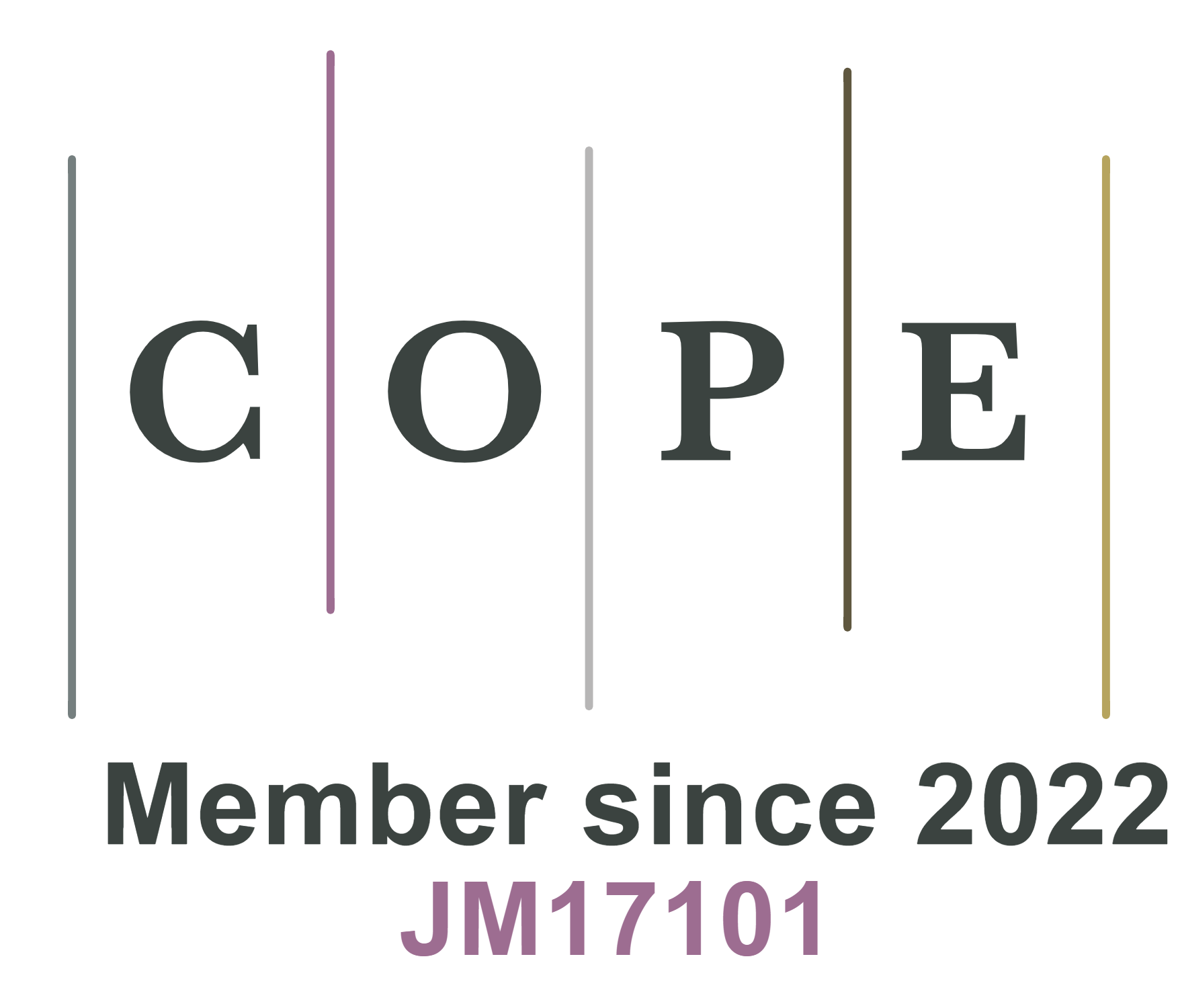Single-atomic-Ni electrocatalyst derived from phthalocyanine-modified MOF for convoying CO2 intelligent utilization
Abstract
Single-atomic-site catalysts have been demonstrated as promising candidates for electrochemical CO2 reduction reaction (eCO2RR). However, the universal construction strategies need to be further developed to synthesize the desired single-atomic-site catalysts with high eCO2RR activity for feasible CO2 utilization. Herein, a novel 2-methylimidazole-phthalocyanine-Ni (IM4NiPc) coordinatively modified ZIF-8 was rationally fabricated and applied to derive the single-atomic-Ni electrocatalyst (Ni-N-C-l), which is capable of delivering much improved activity for eCO2RR, compared to the pristine IM4NiPc immobilized onto ZIF-8-derived N-doped carbon surface, and is also comparable to the best reported catalysts. The satisfied Faradaic efficiency, current density and stability of CO2-to-CO electroconversion over Ni-N-C-l are shown to originate from the verified Ni-N4 configuration, particularly, reaching a CO Faradaic efficiency of 99% in a wide potential range. Moreover, based on the outstanding eCO2RR activity of Ni-N-C-l, we successfully realized the exemplary synthesis of amide polymer materials through CO-mediated electro/thermocatalytic cascade processes, demonstrating the feasibility of utilizing CO2 for material manufacturing. This finding is expected to provide useful insight on the precise design and rational synthesis of the novel single-atomic-site catalysts for future CO2 intelligent utilization.
Keywords
INTRODUCTION
A strategy that kills three birds with one stone has attracted extensive attention, that is, electrocatalytic CO2 reduction systems, which not only convert excess CO2 to alleviate environmental issues but also generate value-added industrial feedstocks and especially store the intermittent renewable energy[1-5]. Although electrocatalytic CO2 reduction reaction (eCO2RR) can be operated under mild conditions, it still faces some problems such as efficient activation of CO2 to confront competitive hydrogen evolution reaction, economic construction of electrocatalysts and upgrading separation of products to optimize costs and benefits[6-10]. Currently, in order to overcome these bottlenecks, by screening various electrocatalytic materials and understanding their structure-activity relationships in eCO2RR, it is imperative to further develop effective, economical, and environmentally friendly strategies for constructing new electrocatalysts.
In virtue of structural and visual identification guided by X-ray absorption spectroscopy, aberration-corrected high-angle annular dark-field scanning transmission electron microscopy, and other techniques, the single-atomic-site catalysts featuring high selectivity, efficient atom utilization, well-defined catalytic site, etc., have exponentially grown to drive the flourishment of various reactions (e.g., eCO2RR)[11-20]. Numerous studies have demonstrated that pyrolytic transition metal-based single-atomic-site catalysts (such as Fe, Co, Ni, etc.) possess obvious advantages in achieving electrochemical CO2-to-CO conversion under ordinary conditions[21-30]. More importantly, the construction methods of single-atomic-site electrocatalysts not only determine the selectivity and stability of catalytic reactions but also affect economic issues such as preparation cost[31-33]. Notably, owing to the intelligent designability and versatile functionality of the architectures (such as composition, porosity, etc.), the metal-organic frameworks (MOFs), particularly zeolite imidazole frameworks (ZIFs), have been utilized as the platforms for packaging, anchoring and dispersing metal precursors to obtain single-atomic-site electrocatalysts for efficient eCO2RR[34-40]. For example, pioneeringly, Zhao et al. reported that Ni-single atoms (SAs)/N-doped carbon (N-C) derived from ZIF-8 can efficiently drive electrochemical CO2-to-CO conversion with enhanced current densities and Faradaic efficiencies when compared to Ni nanoparticle-based counterpart[41]. Moreover, by confining metal complexes into ZIF-8, pyrolytically derived single-atomic-site electrocatalysts also achieve selective CO2 electroreduction[42]. These studies undoubtedly provide scientific references for developing CO2 electroconversion using low-cost ZIF-8 precursors[43]. Nevertheless, directly using low-concentration and unpurified CO from CO2 electroconversion for subsequent material manufacturing has great industrial feasibility and flexibility, yet there is a dearth of case studies.
In this work, firstly and innovatively, taking ZIF-8 as the classical casting pattern and unique 2-methylimidazole-phthalocyanine-Ni (IM4NiPc) as an additive ligand, we successfully constructed a novel pyrolytic single-atomic-Ni catalyst (Ni-N-C-l) to evaluate the electrocatalytic activity of CO2-to-CO transformation, revealing the optimal activity under economical construction. Concretely, the designed Ni-N-C-l electrocatalyst featuring recognized Ni-N4 coordination structure shows outstanding CO2-to-CO stability of 20 h with near-uniform Faradaic efficiencies, which surpasses the vast majority of reported
EXPERIMENTAL
Synthesis of Ni-N-C-l
Firstly, 2.30 g of 2-methylimidazole and 0.025 g of IM4NiPc were dissolved in 30 mL of methanol using ultrasound for 5 min, which was subsequently added into 30 mL of methanol containing 1.04 g of
Secondly, the above ZIF-8-(IM4NiPc) powder was heat-treated at 1,000 °C for two hours under Ar atmosphere to produce the Ni-N-C-l catalyst.
Synthesis of Ni-N-C-a
First, 0.05 g of N-C derived from ZIF-8 (carbonized at 1,000 °C) was dispersed in 50 mL of methanol via sonication for 30 min. Next, 30 mL of methanol containing 0.025 g of IM4NiPc was added to the above solution. After being stirred for 24 h, the Ni-N-C-a catalyst was obtained using a similar collection method.
Polymer engineering
Tris(4-iodophenyl) amine (TIA) (62.1 mg, 0.1 mmol), palladium acetate (10 mg), piperazine or 2-methy piperazine (0.15 mmol), and bis(2-diphenylphosphinophenyl)ether (DPEphos, 10 mg) were added in 8 mL of toluene solution. The mixed solution was heated to 80 °C while continuously pumping in the produced gas from eCO2RR. After reaction for 12 h, the obtained polymer materials were washed with toluene and ethanol and then dried under vacuum at 60 °C.
The additional detailed experimental data, such as reagents, characterizations, and electrochemical measurements, are provided in the supporting information.
RESULTS AND DISCUSSION
Synthesis and characterization of catalysts
Distinguishing traditional introduction of node-evolved or cavity-confined nickel sites, we innovatively designed and synthesized a novel IM4NiPc molecule with four 2-methylimidazole groups as the additive ligands to introduce the active Ni sites into ZIF-8 (denoted as ZIF-8-(IM4NiPc), as shown in Supplementary Figure 1 and Figure 1A. Importantly, the feasibility of this strategy is mainly dependent on the IM4NiPc having good methanolic solubility, well-defined structure [Figure 1B and C][44], and unique coordination ability with Zn2+ [Supplementary Figure 2]; other detailed data are shown in the supporting information and Supplementary Figures 3-5. Moreover, Figure 1A further depicts a schematic representation of the synthesis procedure for ZIF-8-(IM4NiPc) derived Ni-N-C-l catalyst. Meanwhile, for comparison, IM4NiPc was also immobilized onto congeneric pyrolytic N-C to form the counterpart, labeled as Ni-N-C-a.
Figure 1. Synthesis illustration of (A) IM4NiPc, ZIF-8-(IM4NiPc), Ni-N-C-l and Ni-N-C-a, (B) optical photograph of IM4NiPc in methanol, and (C) high-resolution mass spectrum of IM4NiPc.
Fundamentally, the Ni-N-C-l/a electrocatalysts were controlled to load nearly identical Ni contents to shut out the influence of nickel contents[45,46], as verified by inductively coupled plasma atomic emission spectrometry (ICP-AES) tests [Supplementary Figure 6]. The powder X-ray diffraction (PXRD) patterns in Supplementary Figure 7 and Figure 2A present that ZIF-8-(IM4NiPc) displays similar characteristic patterns with pristine ZIF-8, indicating the introduction of the IM4NiPc molecules does not disturb the ZIF-8 framework. Subsequently, the designed two catalysts have been successfully derived from the parent materials, exhibiting similar carbon characteristics but without any diffraction peaks associated with Ni nanoparticles. This indicates the highly dispersed configuration of Ni species. Furthermore, the Raman spectra of two catalysts reveal low-intensity ratios of the D band to G band [Figure 2B]. Particularly, the designed Ni-N-C-l exhibits a lower ratio value, indicating a higher degree of graphitization due to the participation of IM4NiPc. It is well-known that pore engineering in catalysts is closely related to the exposure of active sites and continuous mass transfer. Accordingly, representative N2 sorption isotherms disclose the specific surface areas and pore size distribution of the selected catalysts [Figure 2C and D]. Interestingly, compared to Ni-N-C-a catalyst, the Ni-N-C-l reveals a higher specific surface area of
Figure 2. (A) PXRD patterns, (B) Raman spectra, (C) N2 sorption isotherms, (D) pore size distributions, (E) XPS N 1s and (F) Ni 2p spectra of the designed catalysts.
We next used scanning electron microscopy (SEM) to identify the morphologies of the designed catalysts. Compared with protogenetic ZIF-8, the particle size of ZIF-8-(IM4NiPc) was significantly reduced after introducing molecular nickel source [Supplementary Figure 8]. After pyrolysis, the Ni-N-C-l material exhibits a shrunk morphology as compared to ZIF-8-(IM4NiPc) [Supplementary Figure 9]. To further visualize morphologies of the Ni-N-C-l/a, we employed transmission electron microscopy (TEM). As can be observed in Figure 3, Ni-N-C-l displays a fluffed nanoparticle feature consistent with the SEM result, with an absence of metal particles or clusters. Furthermore, the energy-dispersive X-ray (EDX) element mapping images show that Ni, N, and C are uniformly dispersed throughout the sample of Ni-N-C-l [Figure 3B]. This is also observed in the Ni-N-C-a sample [Supplementary Figure 10], which likewise suggests the high dispersity of nickel species at the same scale. More importantly, the aberration-corrected high-angle annular dark-field scanning TEM (AC-HAADF-STEM) image clearly shows that Ni-N-C-l consists of atomically dispersed Ni sites, as evidenced by the distinct white dots in Figure 3C. The X-ray absorption near-edge structure (XANES) spectrum of Ni-N-C-l [Figure 3D], obtained from the Ni K-edge, displays the Ni edge energy of Ni-N-C-l that lies between those of metal foil and NiPc references. This observation suggests that the Ni species in Ni-N-C-l may exist within the valence state of 0 to +2, which agrees with the XPS results. Moreover, the signal of the D4h symmetry structure with 1s to 4pz transition in Ni-N-C-l is lower than that of NiPc, indicating that the symmetric structure of square-planar Ni-N4 was modulated during pyrolysis. Additionally, the analysis of the Fourier transformed extended X-ray absorption fine structure (EXAFS) supports the existence of atomically dispersed Ni sites with Ni-N coordination in Ni-N-C-l [Figure 3E], in accordance with the reported works[54-56]. In particular, the fitting analysis is carried out to verify the atomic configuration of Ni-N-C-l; that is, the single Ni atom is coordinated with four N atoms [Figure 3F, Supplementary Figure 11 and Supplementary Table 1].
eCO2RR performance
Based on the analysis of structures and morphologies mentioned above, the electrocatalytic activities of CO2 conversion over the comparable catalysts have been evaluated in a typical H-type cell with CO2-saturated 0.5 M KHCO3 solution. Linear sweep voltammetry (LSV) curves indicate that Ni-N-C-l exhibits an exceptional current density of nearly 70 mA cm-2 at -1.1 V, greatly surpassing that of Ni-N-C-a [Figure 4A]. Intriguingly, the LSV curves in Ar-saturated solutions further indicate the contribution of CO2 electroconversion to current densities [Supplementary Figure 12]. Generally, the reduction products from electrochemical CO2 conversion were analyzed by off-line 1H nuclear magnetic resonance (NMR) spectrometer and online gas chromatograph (GC), respectively. By combining the obtained 1H NMR and GC spectra of Ni-N-C-l operating at -0.78 V [Supplementary Figures 13 and 14], indeed, the only reduction product of CO2 electroconversion is CO. As shown in Figure 4B and Supplementary Figures 15 and 16, the Ni-N-C-l catalyst exhibits higher Faradic efficiencies of CO (FECO) within a wider potential window compared to other counterparts. Concretely, the FECO and current densities of Ni-N-C-l were optimized by controlling the amount of IM4NiPc (related to active sites) and the carbonization temperature (related to conductivity). Moreover, as observed in Figure 4C and Supplementary Figure 17, the CO partial current densities (jCO) of Ni-N-C-l are better than those of Ni-N-C-a, reaching a jCO of 57.5 mA cm-2 at -0.98 V, which is 4.75 times higher than that of Ni-N-C-a. To further emphasize the superiority of Ni-N-C-l in CO2 electroreduction, it is evident that it exhibits higher turnover frequency (TOF) values [Figure 4D]. Undeniably, the stability is another essential reference for the practical application of catalysts. Figure 4E demonstrates the exceptional long-time durability of Ni-N-C-l, as both j and FECO almost remain unchanged for continuous electrolysis of 20 h at -0.78 V. This stands in sharp contrast to the Ni-N-C-a counterpart and reported catalysts
Figure 4. (A) LSV curves, (B) FECO, (C) jCO, (D) TOFs and (E) long-time durability of Ni-N-C-a and Ni-N-C-l.
To gain a deep understanding of the eCO2RR kinetics of the investigated catalysts in this system, a fitted Tafel slope of Ni-N-C-l in Supplementary Figure 18 indicates that the first electron transfer to form site-adsorbed intermediates may be the rate-determining step[24,57]. Meanwhile, the electrochemical active areas of the two catalysts were compared by evaluating the electrochemical double-layer capacitances, and the results show that Ni-N-C-l has a larger active surface area [Supplementary Figure 19][58]. In addition, the fast interfacial charge-transfer capacity of Ni-N-C-l during the eCO2RR is verified by the Nyquist plot in Supplementary Figure 20, as compared to Ni-N-C-a. These findings undeniably demonstrate the inherent high activity of Ni-N-C-l towards CO2 electroconversion, with a traceable mechanism
Integrated CO2 electroreduction to polymer engineering
To tackle the issue of economic and efficient product purification, we proposed, for the first time, the direct downstream conversion protocol of CO through polymer engineering. As can be seen in
CONCLUSIONS
In summary, we successfully demonstrated the fabrication of the single-atomic-site catalyst from the phthalocyanine-modified MOF and the novel manufacturing of polymer materials from CO2 through electro/thermocatalytic cascade processes steered by the designed catalyst. Importantly, the derived
DECLARATIONS
Acknowledgments
The authors thank Prof. Xin-Tao Wu for his constructive suggestions.
Authors’ contributions
Conceived the research and designed the experiments: Ma DD, Zhu QL
Prepared the phthalocyanines and catalysts: Wang SM
Carried out the electrochemical testing: Wang SM, Yuan X
Carried out the AC-HAADF-STEM measurement: Lin W
Completed the manuscript: Wang SM, Ma DD, Zhu QL
Discussed and revised the manuscript: Wang SM, Yuan X, Zhou S, Li X, Han SG, Lin W, Zheng L, Ma DD, Zhu QL
Availability of data and materials
The details of materials and reagents, instrumentation and characterizations, and electrochemical measurements were shown in the supporting information.
Financial support and sponsorship
The authors are grateful for the financial support of the National Key Research and Development Program of China (2021YFA1500402), the National Natural Science Foundation of China (NSFC) (52332007, 22105203, 22175174, and 22375203), the Natural Science Foundation of Fujian Province of China (2021J06033 and 2022L3092), and the China Postdoctoral Science Foundation (2022M723147).
Conflicts of interest
All authors declared that there are no conflicts of interest.
Ethical approval and consent to participate
Not applicable.
Consent for publication
Not applicable.
Copyright
© The Author(s) 2024.
Supplementary Materials
REFERENCES
1. Tomboc GM, Choi S, Kwon T, Hwang YJ, Lee K. Potential link between Cu surface and selective CO2 electroreduction: perspective on future electrocatalyst designs. Adv Mater 2020;32:e1908398.
2. Zhu S, Delmo EP, Li T, et al. Recent advances in catalyst structure and composition engineering strategies for regulating CO2 electrochemical reduction. Adv Mater 2021;33:e2005484.
3. Chen S, Li WH, Jiang W, et al. MOF encapsulating N-heterocyclic carbene-ligated copper single-atom site catalyst towards efficient methane electrosynthesis. Angew Chem Int Ed 2022;61:e202114450.
4. Ross MB, De Luna P, Li Y, et al. Designing materials for electrochemical carbon dioxide recycling. Nat Catal 2019;2:648-58.
5. De Luna P, Hahn C, Higgins D, Jaffer SA, Jaramillo TF, Sargent EH. What would it take for renewably powered electrosynthesis to displace petrochemical processes? Science 2019;364:eaav3506.
6. Khezri B, Fisher AC, Pumera M. CO2 reduction: the quest for electrocatalytic materials. J Mater Chem A 2017;5:8230-46.
7. Lu Q, Rosen J, Zhou Y, et al. A selective and efficient electrocatalyst for carbon dioxide reduction. Nat Commun 2014;5:3242.
8. Sa YJ, Lee CW, Lee SY, Na J, Lee U, Hwang YJ. Catalyst-electrolyte interface chemistry for electrochemical CO2 reduction. Chem Soc Rev 2020;49:6632-65.
9. Wang G, Chen J, Ding Y, et al. Electrocatalysis for CO2 conversion: from fundamentals to value-added products. Chem Soc Rev 2021;50:4993-5061.
10. Jia S, Ma X, Sun X, Han B. Electrochemical transformation of CO2 to value-added chemicals and fuels. CCS Chem 2022;4:3213-29.
11. Han SG, Ma DD, Zhu QL. Atomically structural regulations of carbon-based single-atom catalysts for electrochemical CO2 reduction. Small Methods 2021;5:e2100102.
12. Liu J, Cai Y, Song R, et al. Recent progress on single-atom catalysts for CO2 electroreduction. Mater Today 2021;48:95-114.
13. Wang X, Jia Y, Mao X, et al. Edge-rich Fe-N4 active sites in defective carbon for oxygen reduction catalysis. Adv Mater 2020;32:e2000966.
14. Hu C, Wang Y, Chen J, et al. Main-group metal single-atomic regulators in dual-metal catalysts for enhanced electrochemical CO2 reduction. Small 2022;18:e2201391.
15. Ma D, Han S, Cao C, et al. Bifunctional single-molecular heterojunction enables completely selective CO2-to-CO conversion integrated with oxidative 3D nano-polymerization. Energy Environ Sci 2021;14:1544-52.
16. Su X, Yang XF, Huang Y, Liu B, Zhang T. Single-atom catalysis toward efficient CO2 conversion to CO and formate products. ACC Chem Res 2019;52:656-64.
17. Li X, Rong H, Zhang J, Wang D, Li Y. Modulating the local coordination environment of single-atom catalysts for enhanced catalytic performance. Nano Res 2020;13:1842-55.
18. Zhang E, Wang T, Yu K, et al. Bismuth single atoms resulting from transformation of metal-organic frameworks and their use as electrocatalysts for CO2 reduction. J Am Chem Soc 2019;141:16569-73.
19. Li J, Guan Q, Wu H, et al. Highly active and stable metal single-atom catalysts achieved by strong electronic metal-support interactions. J Am Chem Soc 2019;141:14515-9.
20. Wang WL, Santos EJ, Jiang B, et al. Direct observation of a long-lived single-atom catalyst chiseling atomic structures in graphene. Nano Lett 2014;14:450-5.
21. Han S, Ma D, Zhou S, et al. Fluorine-tuned single-atom catalysts with dense surface Ni-N4 sites on ultrathin carbon nanosheets for efficient CO2 electroreduction. Appl Catal B Environ 2021;283:119591.
22. Pan F, Deng W, Justiniano C, Li Y. Identification of champion transition metals centers in metal and nitrogen-codoped carbon catalysts for CO2 reduction. Appl Catal B Environ 2018;226:463-72.
23. Wang C, Ren H, Wang Z, Guan Q, Liu Y, Li W. A promising single-atom Co-N-C catalyst for efficient CO2 electroreduction and high-current solar conversion of CO2 to CO. Appl Catal B Environ 2022;304:120958.
24. Li Y, Zhang SL, Cheng W, et al. Loading single-Ni atoms on assembled hollow N-rich carbon plates for efficient CO2 electroreduction. Adv Mater 2022;34:e2105204.
25. Yang J, Qiu Z, Zhao C, et al. In situ thermal atomization to convert supported nickel nanoparticles into surface-bound nickel single-atom catalysts. Angew Chem Int Ed 2018;57:14095-100.
26. Zhao S, Chen G, Zhou G, et al. A universal seeding strategy to synthesize single atom catalysts on 2D materials for electrocatalytic applications. Adv Funct Mater 2020;30:1906157.
27. Li X, Zeng Y, Tung C, et al. Unveiling the in situ generation of a monovalent Fe(I) site in the single-Fe-atom catalyst for electrochemical CO2 reduction. ACS Catal 2021;11:7292-301.
28. Wang C, Liu Y, Ren H, Guan Q, Chou S, Li W. Diminishing the uncoordinated N species in Co-N-C catalysts toward highly efficient electrochemical CO2 reduction. ACS Catal 2022;12:2513-21.
29. Li X, Bi W, Chen M, et al. Exclusive Ni-N4 sites realize near-unity CO selectivity for electrochemical CO2 reduction. J Am Chem Soc 2017;139:14889-92.
30. Gu J, Hsu CS, Bai L, Chen HM, Hu X. Atomically dispersed Fe3+ sites catalyze efficient CO2 electroreduction to CO. Science 2019;364:1091-4.
31. Li S, Nagarajan AV, Alfonso DR, et al. Boosting CO2 electrochemical reduction with atomically precise surface modification on gold nanoclusters. Angew Chem Int Ed 2021;60:6351-6.
32. He Y, Shi Q, Shan W, et al. Dynamically unveiling metal-nitrogen coordination during thermal activation to design high-efficient atomically dispersed CoN4 active sites. Angew Chem Int Ed 2021;60:9516-26.
33. Liu S, Sun C, Xiao J, Luo J. Unraveling structure sensitivity in CO2 electroreduction to near-unity CO on silver nanocubes. ACS Catal 2020;10:3158-63.
34. Ma D, Zhu Q. MOF-based atomically dispersed metal catalysts: recent progress towards novel atomic configurations and electrocatalytic applications. Coord Chem Rev 2020;422:213483.
35. Zhang Y, Jiao L, Yang W, Xie C, Jiang HL. Rational fabrication of low-coordinate single-atom Ni electrocatalysts by MOFs for highly selective CO2 reduction. Angew Chem Int Ed 2021;60:7607-11.
36. Cheng H, Wu X, Feng M, et al. Atomically dispersed Ni/Cu dual sites for boosting the CO2 reduction reaction. ACS Catal 2021;11:12673-81.
37. Yan C, Li H, Ye Y, et al. Coordinatively unsaturated nickel-nitrogen sites towards selective and high-rate CO2 electroreduction. Energy Environ Sci 2018;11:1204-10.
38. Li Y, Adli NM, Shan W, et al. Atomically dispersed single Ni site catalysts for high-efficiency CO2 electroreduction at industrial-level current densities. Energy Environ Sci 2022;15:2108-19.
39. Zeng L, Wang Z, Wang Y, et al. Photoactivation of Cu centers in metal-organic frameworks for selective CO2 conversion to ethanol. J Am Chem Soc 2020;142:75-9.
40. Abdel-Mageed AM, Rungtaweevoranit B, Parlinska-Wojtan M, Pei X, Yaghi OM, Behm RJ. Highly active and stable single-atom Cu catalysts supported by a metal-organic framework. J Am Chem Soc 2019;141:5201-10.
41. Zhao C, Dai X, Yao T, et al. Ionic exchange of metal-organic frameworks to access single nickel sites for efficient electroreduction of CO2. J Am Chem Soc 2017;139:8078-81.
42. Wang Y, Jiang Z, Zhang X, et al. Metal phthalocyanine-derived single-atom catalysts for selective CO2 electroreduction under high current densities. ACS Appl Mater Interfaces 2020;12:33795-802.
43. Park KS, Ni Z, Côté AP, et al. Exceptional chemical and thermal stability of zeolitic imidazolate frameworks. Proc Natl Acad Sci USA 2006;103:10186-91.
44. Ma D, Han S, Zhou S, et al. Molecularly dispersed heterogenized metallomacrocycles: molecular structure sensitivity of CO2 electrolysis. CCS Chem 2023;5:1827-40.
45. Jiao L, Li X, Wei W, et al. Hierarchically ordered porous superstructure embedded with readily accessible atomic pair sites for enhanced CO2 electroreduction. Appl Catal B Environ 2023;330:122638.
46. Cao C, Zhou S, Zuo S, et al. Si Doping-induced electronic structure regulation of single-atom Fe sites for boosted CO2 electroreduction at low overpotentials. Research 2023;6:0079.
47. Ma D, Han S, Cao C, Li X, Wu X, Zhu Q. Remarkable electrocatalytic CO2 reduction with ultrahigh CO/H2 ratio over single-molecularly immobilized pyrrolidinonyl nickel phthalocyanine. Appl Catal B Environ 2020;264:118530.
48. Cheng H, Wu X, Li X, et al. Zeolitic imidazole framework-derived FeN5-doped carbon as superior CO2 electrocatalysts. J Catal 2021;395:63-9.
49. Zheng T, Jiang K, Ta N, et al. Large-scale and highly selective CO2 electrocatalytic reduction on nickel single-atom catalyst. Joule 2019;3:265-78.
50. Liu C, Wu Y, Sun K, et al. Constructing FeN4/graphitic nitrogen atomic interface for high-efficiency electrochemical CO2 reduction over a broad potential window. Chem 2021;7:1297-307.
51. Jiao L, Yang W, Wan G, et al. Single-atom electrocatalysts from multivariate metal-organic frameworks for highly selective reduction of CO2 at low pressures. Angew Chem Int Ed 2020;59:20589-95.
52. Petraki F, Papaefthimiou V, Kennou S. The electronic structure of Ni-phthalocyanine/metal interfaces studied by X-ray and ultraviolet photoelectron spectroscopy. Organic Electronics 2007;8:522-8.
53. Wang X, Chen Z, Zhao X, et al. Regulation of coordination number over single Co sites: triggering the efficient electroreduction of CO2. Angew Chem Int Ed 2018;57:1944-8.
54. Boppella R, Austeria P M, Kim Y, et al. Pyrrolic N-stabilized monovalent Ni single-atom electrocatalyst for efficient CO2 reduction: identifying the role of pyrrolic-N and synergistic electrocatalysis. Adv Funct Mater 2022;32:2202351.
55. Yang HB, Hung S, Liu S, et al. Atomically dispersed Ni(I) as the active site for electrochemical CO2 reduction. Nat Energy 2018;3:140-7.
56. Jiang K, Siahrostami S, Zheng T, et al. Isolated Ni single atoms in graphene nanosheets for high-performance CO2 reduction. Energy Environ Sci 2018;11:893-903.
57. Geng Z, Cao Y, Chen W, et al. Regulating the coordination environment of Co single atoms for achieving efficient electrocatalytic activity in CO2 reduction. Appl Catal B Environ 2019;240:234-40.
58. Hu M, Wang N, Ma D, Zhu Q. Surveying the electrocatalytic CO2-to-CO activity of heterogenized metallomacrocycles via accurate clipping at the molecular level. Nano Res 2022;15:10070-7.
59. Ou X, Niu Y, Liu Q, et al. Recent progress in CO2-based polyurethanes and polyureas. Prog Polym Sci 2024;149:101780.
Cite This Article
How to Cite
Download Citation
Export Citation File:
Type of Import
Tips on Downloading Citation
Citation Manager File Format
Type of Import
Direct Import: When the Direct Import option is selected (the default state), a dialogue box will give you the option to Save or Open the downloaded citation data. Choosing Open will either launch your citation manager or give you a choice of applications with which to use the metadata. The Save option saves the file locally for later use.
Indirect Import: When the Indirect Import option is selected, the metadata is displayed and may be copied and pasted as needed.

























Comments
Comments must be written in English. Spam, offensive content, impersonation, and private information will not be permitted. If any comment is reported and identified as inappropriate content by OAE staff, the comment will be removed without notice. If you have any queries or need any help, please contact us at [email protected].